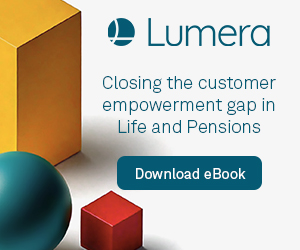The evolving pensions landscape has brought with it a shift in responsibility.
The old system, which comprised of mainly defined benefit schemes meant that members did not have to take much responsibility for their savings and possibly only considered their form of drawdown or income withdrawal when approaching or at-retirement.
Now, however, the increasingly popular defined contribution pension has attracted high numbers of people who look to building their pot in their auto-enrolled workplace pension. Increased communications between the regulator, pension providers, employers and employees on this savings form has encouraged more people to take an interest in their retirement savings a lot earlier.
But, this is not enough. Not everyone is convinced that building a pension pot is the most “responsible” route and may see it as a passive form of saving.
When it comes to the issue of taking financial responsibility we can be brought back to the property/assets versus pensions dispute.
Speaking at this week’s Transparency Task Force Symposium, TCF Investments founder and CEO David Norman put forward a strong statement for some peoples’ way of thinking on the issue. People choose a “buy-to-let rather than a pension because: at least if I get it wrong, I get it wrong, not someone else taking my money,” Norman said.
This mind-set towards pensions highlights a fundamental problem: the lack of understanding and trust in the pensions industry.
Individuals investing in assets to provide an income in later life may believe that this is a better option than a pension due to the fact that they are in complete control of all of their incomings and outgoings and may not feel this is the case with pensions.
But, why do people lack trust in the sector?
One reason can be attributed to the opacity of the system. If people were completely aware of how much they are saving, by who and what their money is being invested in, future estimates and greater communications surrounding their individual options, then they could be more likely to see the benefits.
While a solution cannot be achieved in an instant, there are a number of small changes that will have an impact in the long term. Greater communication and transparency being key factors to ensuring members are involved and aware of processes involving their pension and, hopefully the eventual introduction of the pensions dashboard will also enable members to feel a greater sense of control over their savings.
Latest News
-
Over-taxation concerns persist as repayments exceed £1.4bn
-
PA Spring Conference: BBB to establish investment vehicle to attract pension fund investment in venture capital
-
Employers urged to step up on social mobility amid 'diversity-washing' concerns
-
News in brief - 25 April 2025
-
This week in pensions: 21-25 April 2025
-
Govt confirms plans to include small pots solution in Pension Schemes Bill
Being retirement ready
Gavin Lewis, Head of UK and Ireland Institutional at BlackRock, talks to Francesca Fabrizi about the BlackRock 2024 UK Read on Retirement report, 'Ready or not. How are we feeling about retirement?’
Time for CDI
Laura Blows speaks to AXA Investment Managers (AXA IM) senior portfolio manager for fixed income, Rob Price, about cashflow-driven investing (CDI) in Pensions Age’s latest video interview
The role of CDC

In the latest Pensions Age podcast, Laura Blows speaks to TPT Retirement Solutions Chief Client Strategy Officer, Andy O’Regan, about the role of collective DC (CDC) within the UK pensions space
Keeping on track

In the latest Pensions Age podcast, Sophie Smith talks to Pensions Dashboards Programme (PDP) principal, Chris Curry, about the latest pensions dashboards developments, and the work still needed to stay on track
© 2019 Perspective Publishing Privacy & Cookies















Recent Stories